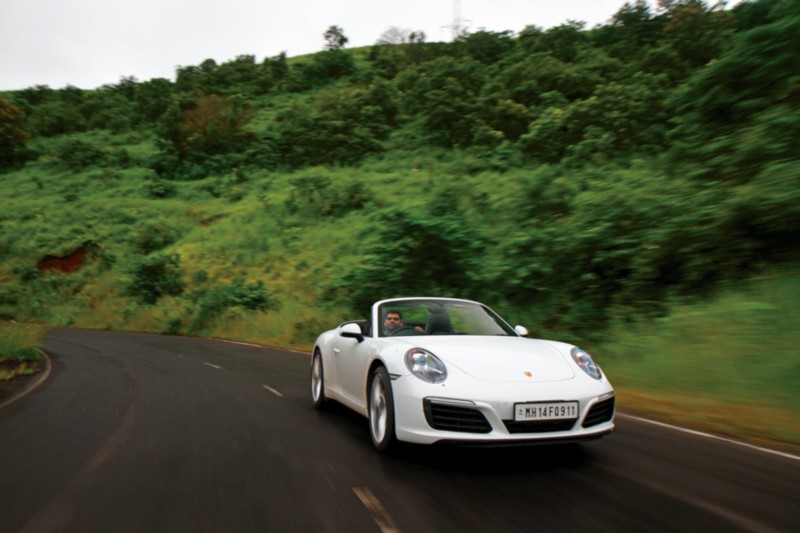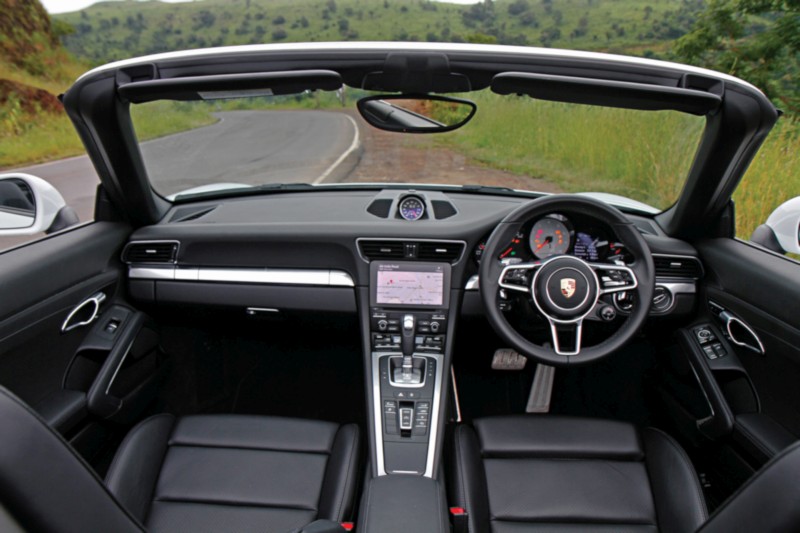A turbo 911 Carrera S from Porsche without the ‘turbo’ badging? Unthinkable? Maybe. Inevitable? Yup. Yet neither Stuttgart nor the world has turned upside down. Here’s why.
Story: Jim Gorde
Photography: Sanjay Raikar
Ladies and gentlemen, boys and girls, apples and oranges, do we have a set of choices for you! Porsche now have two turbocharged 3.0-litre six-cylinder engines in their portfolio. Behind door number one are a bunch of medium and large SUVs that take care of numbers and use a V6 sitting in the front. Door number two is the one which, if you’re a purist, you approach with your eyes closed.
That’s where the boxer-sixes are; snuggled on that rear axle. Only this time even the one not wearing the mark packs a pair of turbines concealed neatly below a new set of vertical grille-slats. On the rump? A humble ‘911’. Raise that, though, and there’s a little silver badge that says ‘3.0 S’. Still no ‘turbo’. It’s like they don’t want you to know.
Is it that bad? Well, no. Quite the contrary, actually. It’s good! Not only can you say you have a 911 turbo — remember, your voice isn’t case-sensitive — but you also get 20 more horses, 60 more drehmoments and 0.8 km/l more than if you’d picked up a 3.8 a few months ago. But how good? That’s what we’re to establish.
The exterior on the new Type 991.II somehow looks even smoother and flowing. The biggest visible changes are the 3D tail-lamp clusters and, of course, the vertical grille slats on the engine cover. There’s a fair bit of carbon-fibre too. Aero is one thing, yes, but Porsche have obviously focused on weight-saving.
Porsche have chipped away at weight thanks to a clever use of multiple grades of steel, aluminium and magnesium in construction. They’ve saved 1.5 kg thanks to a new aluminium alloy for the crankcase, and another two kilos with a composite oil pan. The Cabriolet, mechanical tent and all, brings the total weight to just 1,530 kg. However, inside, there’s no telling that. The bucket seats that caress you, the wheel, borrowed from the 918 Spyder, complete with a rotary drive-mode selector, and the paddle-shifters that seem to be made of baby aluminium are all very racy and set up to excite you.
This is a Porsche, and there are several features that you will see and desperately want, most of which aren’t part of the standard kit. The Sport Chrono package is the first usual suspect. Then there’s the nose-raiser that increases ride height at the front axle by 40 millimetres at speeds of up to 60 km/h; an absolute necessity, unless you plan to drive in a slice of paradise where speed-humps are restricted to myth. There’s more advanced stuff on offer, too, optionally. The rear-axle steering function, earlier restricted to the spec-sheet of the Turbo S or GT3 RS, is now available on the Carrera S. There’s one more thing that the S gets: wider 11.5×20-inch rear rims wrapped in Turbo-spec 305/30 ZR20 P-Zero rubber. Right!
The magic happens under the rear vents and on the axle. The new 2,981-cc boxer-six, losing over 800 cc of displacement over its predecessor, puts out a fun-tillating 420 PS of peak muscle, but, more importantly, 500 Nm of peak twist between 1,700 and 5,000. The only thing remotely like lag that I felt was when I first got in, shifted to ‘D’ and let my right toe explore what that crafted aluminium bit in the foot-well could do.























Leave a Reply